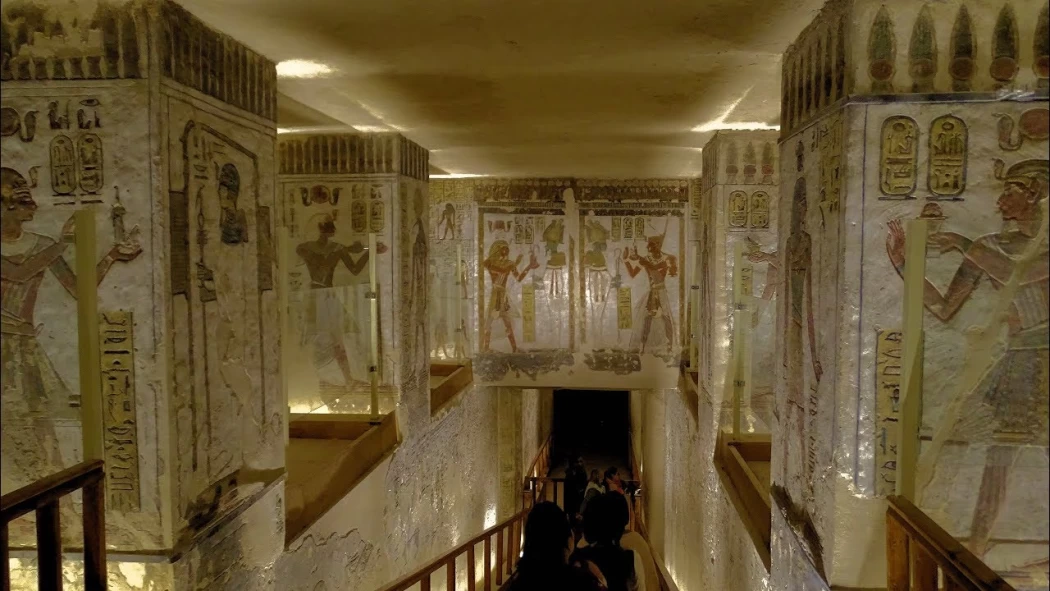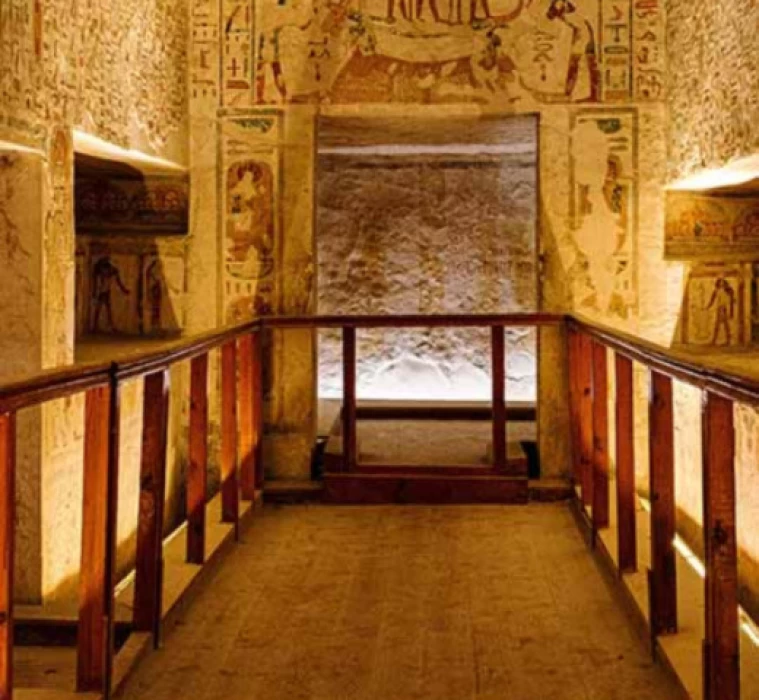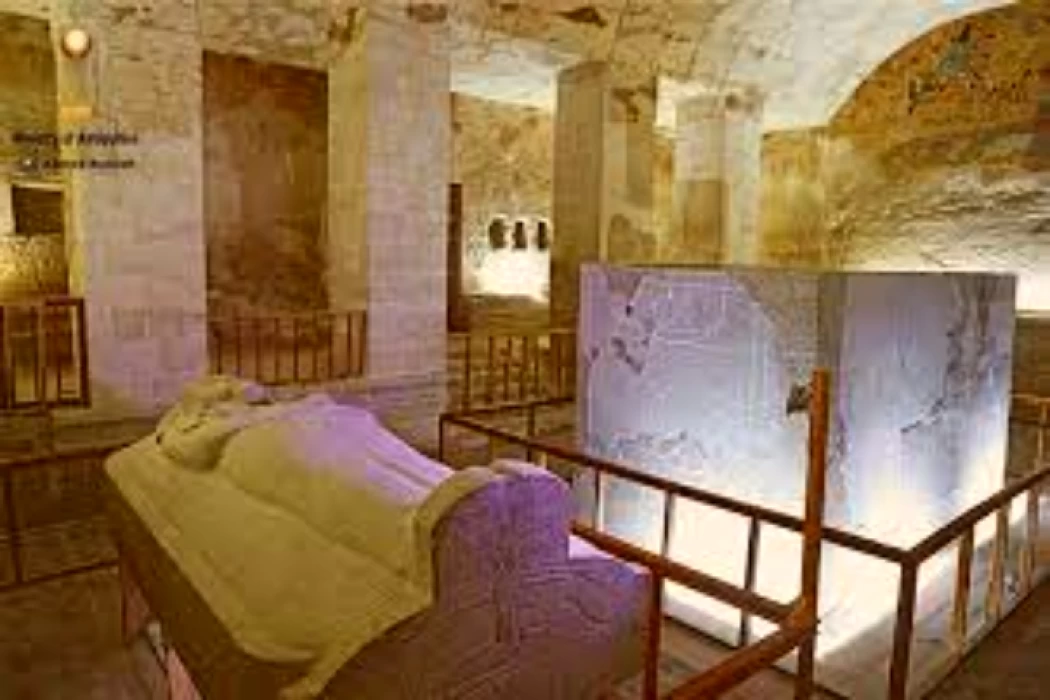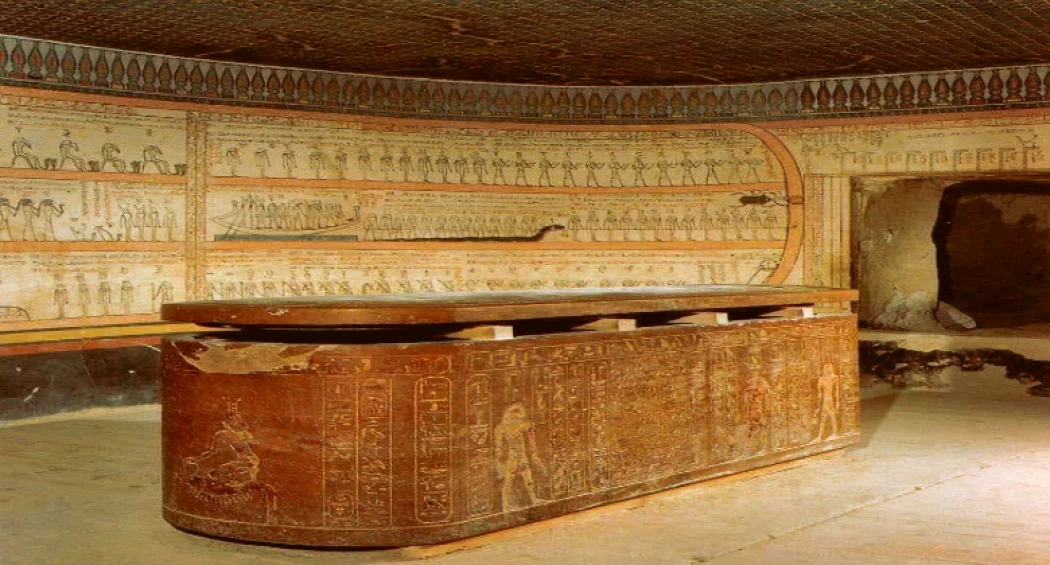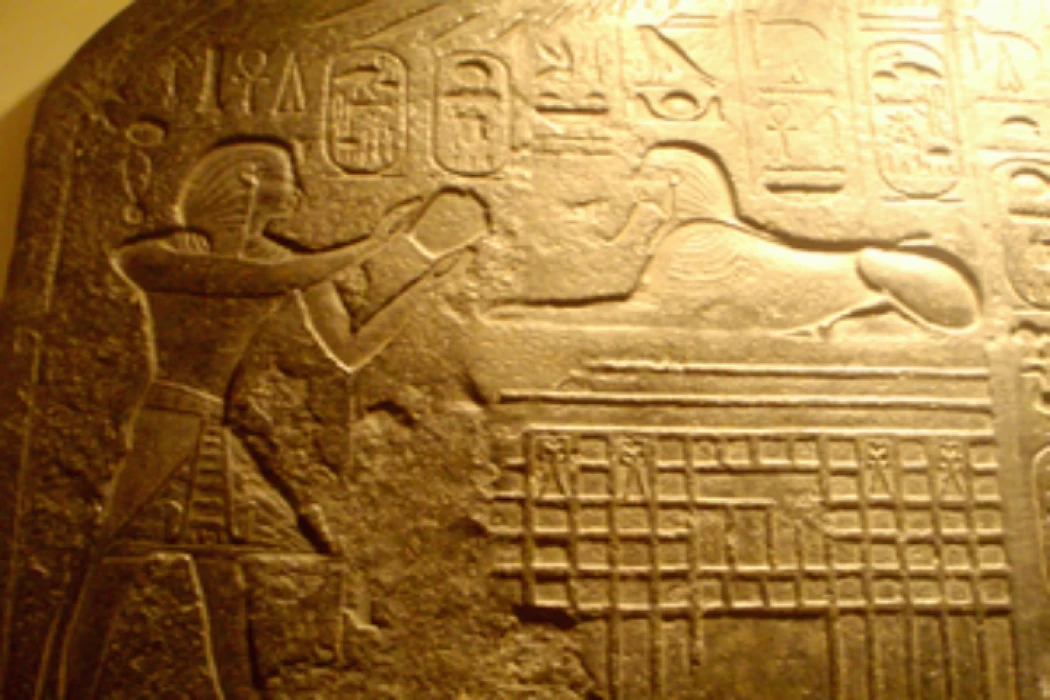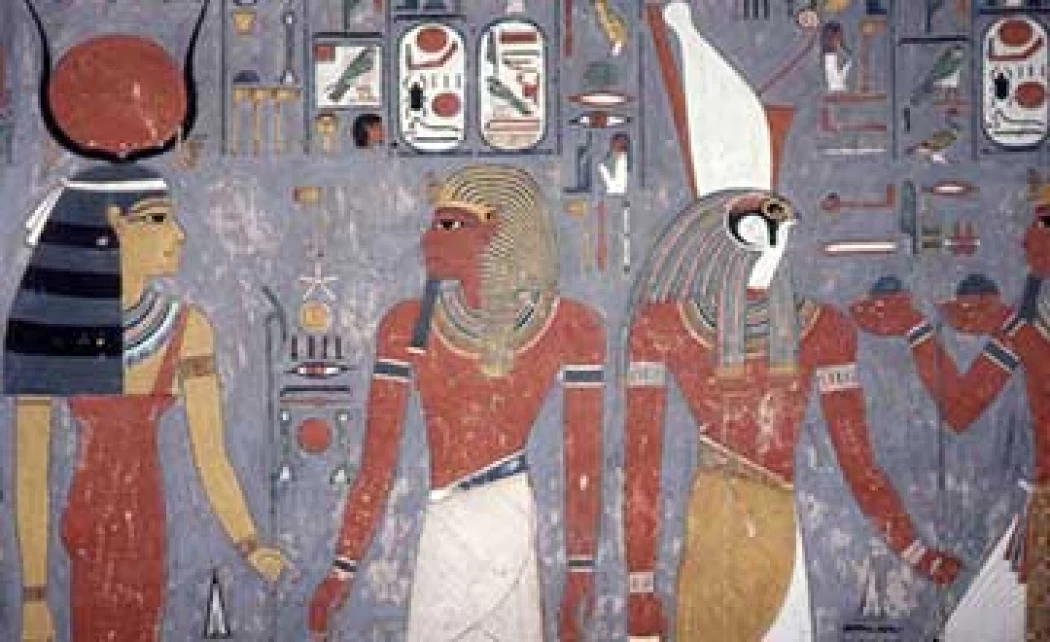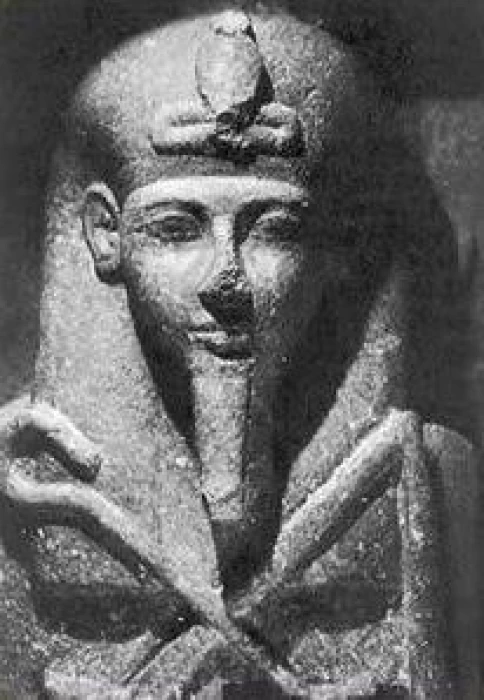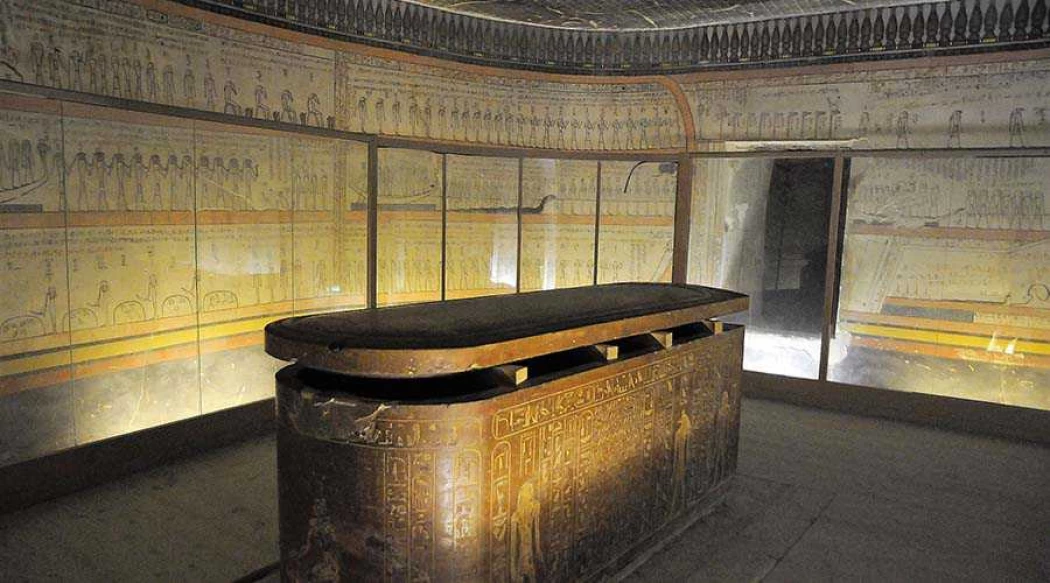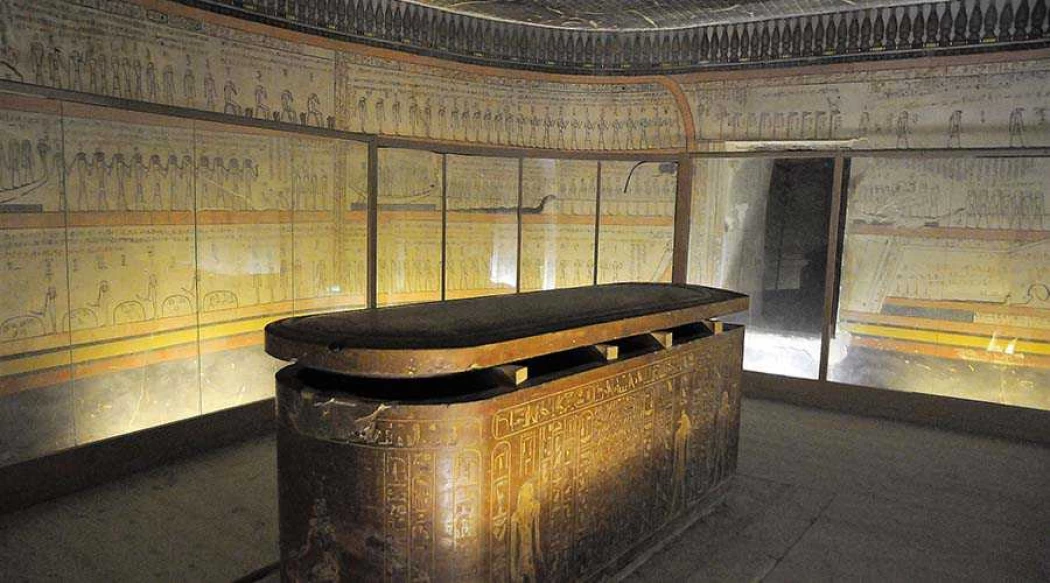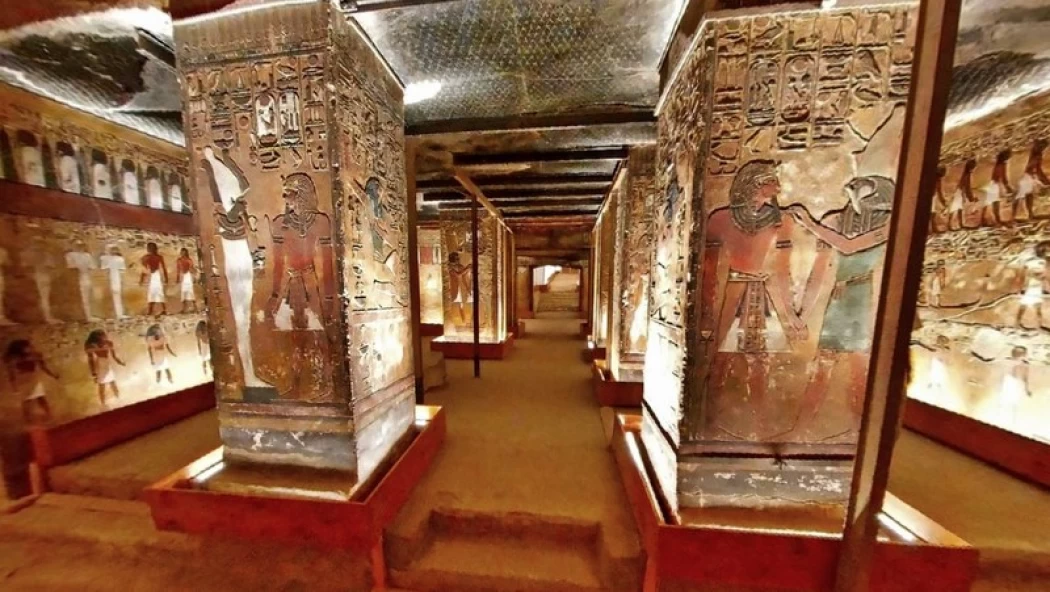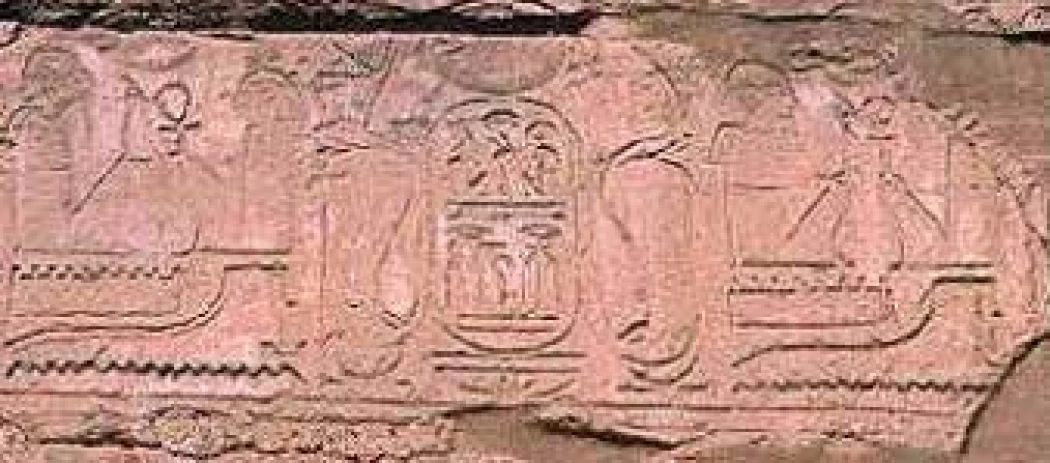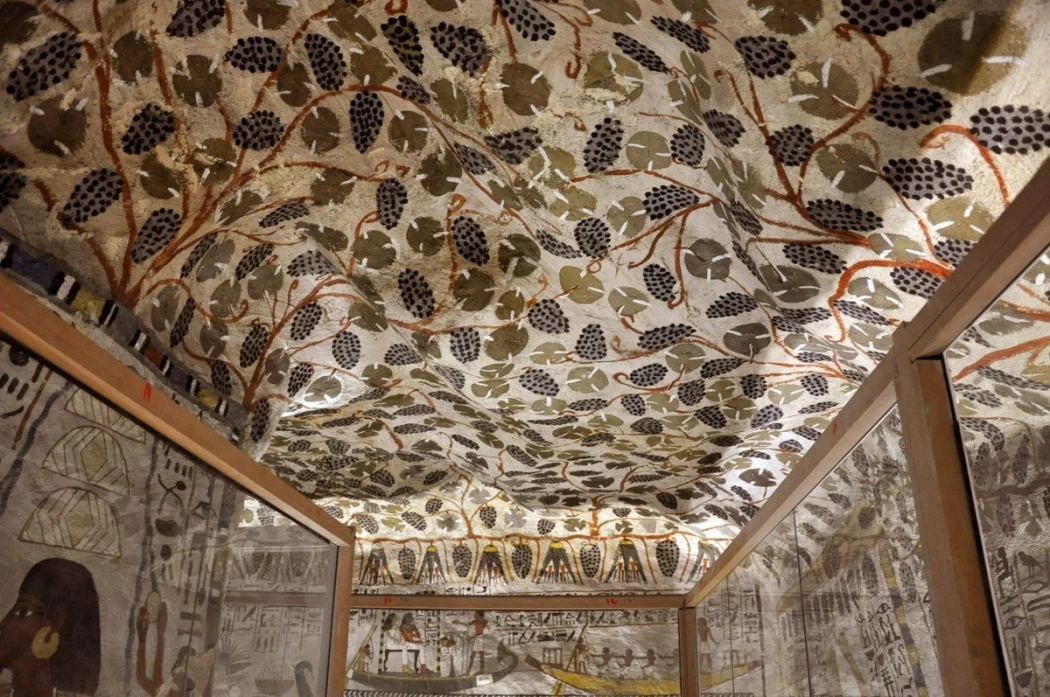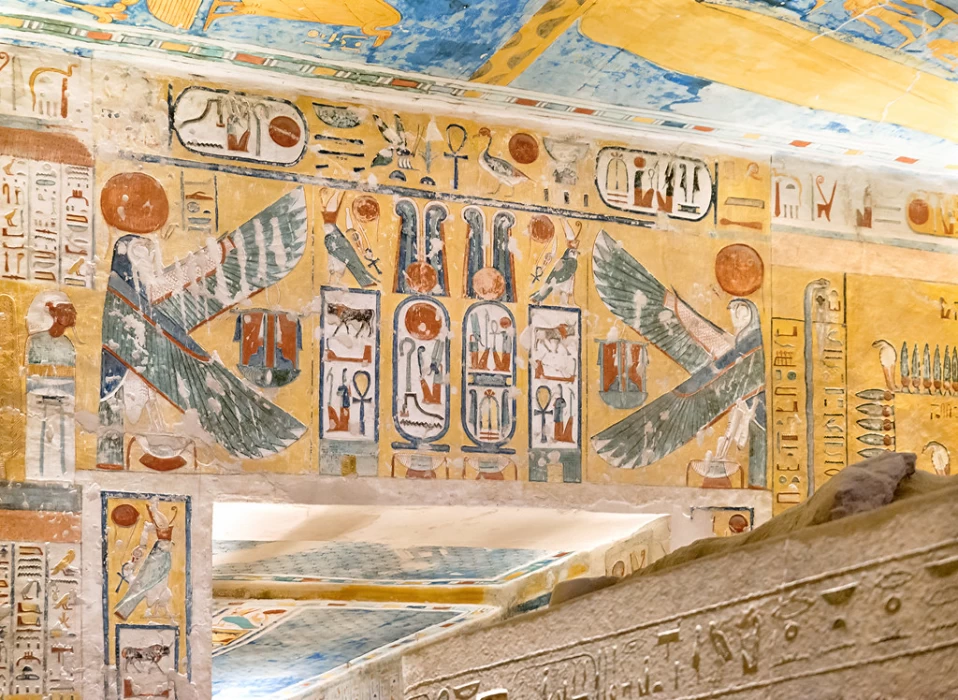Admin
Ramses II is the son of Pharaoh Seti I and Queen Tuya and was called the co-ruler of his father. He accompanied his father during his military campaigns in Nubia, Bilad al-Sham, and Libya at the age of fourteen. Before the age of 22, he himself was leading expeditions to Nubia with his sons
Admin
Tomb of Ramses II's sons
The tomb was found in a very bad condition and has been subject to conservation and restoration operations since 1994, which Kent Weeks described as the largest conservation and restoration work taking place in the Valley of the Kings since the discovery of King Tutankhamun's tomb (Tomb 62) in 1922.
Admin
Tomb of Seti I | Valley of the Kings
The tomb was discovered in 1817 AD by archaeologist Giovanni Battista Belzoni and then Howard Carter in 1902 AD. The cemetery was named after the Apis cemetery as a result of finding the mummy of a bull in a room next to the burial chamber. The Apis bull is one of the sacred religious beliefs of the ancient civilization of Egypt. It was called "Belzoni's tomb" after its discoverer, Italian archaeologist Giovanni Battista Belzoni.
Admin
Tomb of King Ramses III
King Ramses III, the second king of the 20th dynasty, ruled Egypt in the most difficult period of history for 31 years and was one of the greatest warrior kings in the history of ancient Egypt. Egypt's western borders, the security of the country, the numerous constructions of the country, including in Habu, the additions to the Temple of Amun at Karnak, and the construction of his tomb known as "KV11".
Admin
Tomb of king Merenptah in Luxor | The Second largest tomb
The tomb is considered to be 100% incomplete, as the tomb inscriptions and drawings have been completely completed except for the decorations on the walls at the end of the vestibule after the burial chamber. The columns of the entrance to the burial chamber were broken and vandalized by the workers of the ancient Egyptians, the pharaohs, due to a technical error, as the width of the first coffin was greater than the opening of the burial chamber door.
Admin
Tuthmosis III in LuThe Tomb of King Txor
There is no other city like Luxor with such an infinite number of archaeological sites, including the tomb of King Tuthmosis III in the Valley of the Kings, who was the sole ruler of the country after the death of Queen Hatshepsut, and was one of the most capable kings in the military field and wars and was also distinguished in the science of management throughout history.
Admin
Tomb of King Tuthmosis IV in Luxor
The tomb was dug in the rocks at an appropriate height above the ground level of the Valley of the Kings, which contributed to preserving the inscriptions and drawings of the tomb walls and protecting them from rainwater and the floods of the Nile River during the flood period.
Admin
The Tomb of Amenhotep II in The Valley of The Kings
The tomb of Amenhotep II in the Valley of the Kings is one of the most beautiful and greatest tombs found in Luxor, as it was carved in rock and its ceiling was decorated with blue color and shining stars in it, and the walls were decorated with colorful inscriptions on a yellow ground
Admin
Tomb of Horemoheb
The tomb is decorated with funerary scenes as well, including the rite of opening the mouth.
Admin
Tomb of Siptah
To draw attention to this tomb, the ceiling drawings on the drawing, which smashed it
Admin
Tomb of Thutmose III
This cemetery enjoys the beauty of its engravings. It is noticed that the ceiling is painted blue and has white star engravings
Admin
Tomb of Thutmose I
The first tomb in which King Tuthmosis was buried is tomb No. 20, and its owners are Hatshepsut and Tuthmosis I. It is said that King Thutmose I was during his reign characterized by courage and strength.
Admin
Tomb of Seti ||
He is a member of the Nineteenth Dynasty, the son of both Merneptah and Estnefert II, who ruled Seti II in the period from 1203 to 1197 BC,
Admin
Tomb of Ramses VI
His tomb contained one of only three complete copies of the "Book of Gates," known among the most prominent royal funerary books in ancient Egypt.
Admin
Tomb of Sennefer
It is the only cemetery among the tombs of the nobles, except for the tombs of Deir al-Madina, which decorated the masterpiece room with colorful scenes, the color of which was not leveled, but rather carved in a system so that the grape vineyard appears as if it were anthropomorphic naturally.
Admin
Tomb of Ramses IV
The tomb of Ramses IV or tomb 2 and known globally as KV2, is located in the Valley of the Kings in Egypt, specifically at the bottom of the eastern valley between tomb 7 and tomb 1. It is the royal tomb of Pharaoh Ramses IV, the third king of the twentieth dynasty, and the tomb has been open since ancient times and many inscriptions in different languages were found inside.
